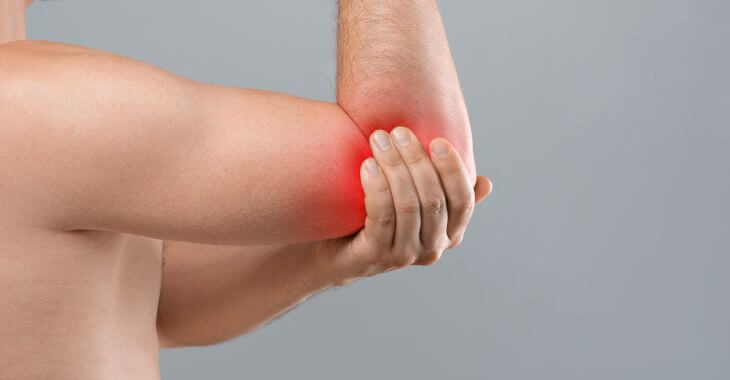What is AROM or Active Range of Motion?

Every joint in the body is designed to allow movement. When two bones meet at a joint, they are connected by ligaments, tendons and other tissues that allow each bone to move in its own direction – even tiny joints in the spine are designed to allow movement. Range of motion, or ROM, is a simple concept – how much motion is allowed by a joint while it is still intact? Active range of motion, or AROM, is different than ROM. Here is what you need to know about AROM and how it plays a role in your health and mobility.
Range of motion is used in a variety of medical and health settings. If you have an injury, a doctor may check the range of motion of the affected joint or limb to determine the extent of injury. Physical therapists and other rehabilitation specialist use range of motion to guide therapy. ROM is also used in fitness and health programs that are designed to help individuals improve their mobility and fitness levels. Active range of motion (AROM) is one of the factors that is gauged for both medical and fitness purposes.
Definition of AROM
Simply put, active range of motion is how far you can voluntarily move a joint. For example, the AROM of your shoulder is determined by how far you can reach your arm up above your head and the circumference of the circular motion you can make with your arm. AROM is controlled by muscle contraction and flexion that allows it to extend the appendage, but also depends on joint flexibility and other factors. AROM is different for each joint and individual, depending on many different factors.
Difference Between AROM and PROM
Passive range of motion, or PROM, is different than AROM. While AROM relies on the muscles, tendons and ligaments to control the movement of the joint, PROM is not limited by the strength of the muscles. PROM is how far a joint can move with assistance – if you pull your leg up to your chest with your arms to stretch, you can move it farther than it can move on its own. The difference is that with AROM, you need muscle control, while PROM is how far the joint can move without requiring muscle contraction or flexion.
How AROM Is Used In Diagnosis
Doctors use active range of motion measurements as one of the tools to diagnose many joint or soft tissue injuries. For example, moving a joint that has a sprain of a muscle or tendon will cause pain – the point of pain limits the AROM and indicates the type of injury. However, if there is no pain but the AROM is limited, it can indicate a problem within the joint, like a ligament sprain. Both PROM and AROM help doctors diagnose injuries or conditions affecting joints and soft tissues to help determine the best treatment plan.
AROM In Rehabilitation
Physical therapists use AROM as a key indicator in rehabilitation. If you are recovering from an injury, surgery or serious condition like a stroke, measuring AROM is one of the factors used to gauge recovery. How far you can voluntarily move the injured joint indicates strength and control. Increasing AROM can be accomplished with exercises to strength the tendons and muscles, as well as stretches and treatments to improve joint mobility. Both PROM and AROM are used in rehabilitation, as well as assisted active range of motion (AAROM).
Using AROM in Fitness
Many athletes use active range of motion to improve their fitness levels. How far you can move your limbs can impact your performance in sports and overall fitness. Exercises that combine stretching with strengthening like yoga can increase AROM. It is important to be careful in pushing the joints too far – increasing AROM is beneficial but trying to move beyond the AROM can result in injury. Increasing the strength and flexibility of joints is best performed in controlled, smaller movements to avoid injury to the joint or soft tissues.

What Impacts AROM?
There are many different factors that can impact the active range of motion of any joint. Genetics, age, fitness levels, injuries, medical conditions and much more can all impact active range of motion The physical aspects of the joint like cartilage, joint fluid and the bones can restrict how far the joint moves, even if your muscles and tendons are strong. Even if the joint and muscles are strong, the nervous system can limit motion. When AROM is limited, it requires medical expertise to determine the cause.
Active range of motion is an important indicator of your health, fitness and mobility levels. If you notice a reduction in your AROM for any joint, you should seek medical diagnosis to determine what is causing your deficiency.
The information provided on this website, including text, graphics, images, and other materials, is intended solely for informational purposes and should not be used as a substitute for professional medical advice, diagnosis, or treatment.


)